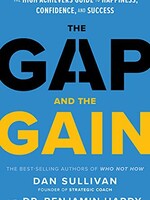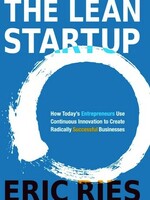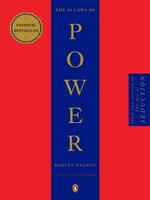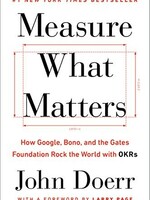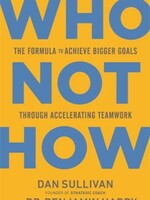User Research - Book Summary
A Practical Guide to Designing Better Products and Services
Release Date: November 7, 2023
Book Author: Stephanie Marsh
Category: Entrepreneurship
Release Date: November 7, 2023
Book Author: Stephanie Marsh
Category: Entrepreneurship
In this episode of 20 Minute Books, we delve into the insightful pages of "User Research". Published in 2018, this book serves as a practical guide for entrepreneurs, researchers, and managers. It aims to answer a crucial question in any business endeavor - does your product cater to your customers' needs? Through years of experience in the field, author Stephanie Marsh presents widely used methods, illustrating the pros and cons of each.
Stephanie Marsh, a UK-based user research expert, is the mind behind this instructive manual. As the head of user research and analysis for the Government Digital Service, an official body responsible for the digital transformation of public services, her expertise is unassailable. Before assuming her current role, Marsh worked as a consultant and led the user experience design company, Bunnyfoot. Her portfolio boasts collaboration with esteemed names such as the BBC, Arsenal Football Club, and EasyJet.
This episode will primarily benefit entrepreneurs seeking to innovate, managers aiming to optimize their business strategies, and researchers delving into the realm of user experience testing. The "User Research" summary comes to you by arrangement with Kogan Page. Tune in, as we unpack the essence of this instructive guide in just 20 minutes.
Dive into the art of user research and propel your business to new heights
Picture this: A world brimming with data, presenting a golden opportunity for businesses to really understand their customers. Yet, in this sea of information, it's easy to feel inundated. An avalanche of data could make you lose sight of what your customers actually desire, unless you know the right questions to ask.
That's where the importance of an efficient user research methodology comes in. With a plethora of techniques available, you want to be certain that you've chosen the method that aligns perfectly with your business. Let's navigate this complex terrain with the help of expert advice from Stephanie Marsh.
Marsh is a seasoned user experience and research consultant, who has had the privilege of working with esteemed clients, ranging from the UK government to EasyJet. Her insights, steeped in practicality, offer a robust roadmap for optimizing your research process.
As we journey through her knowledge, we'll learn
how to pose unbiased questions;
how to navigate through sensitive subjects; and
why keen observation is as vital as the questions you pose.
User research is pivotal for business growth, but maintaining ethical standards is a must
Envision a world where being a number enthusiast turns you into a coveted asset. Welcome to today’s data-dominated landscape, where those adept at collecting and analyzing data are extremely valuable, especially in conducting user research for businesses.
Think of user research as the heartbeat of your business strategy — it's indispensable and can be conducted at any stage. For instance, you're introducing a new product. Your primary concern is simple — will customers be eager enough to pull out their wallets for it? The answer lies in user research. Even during the preliminary stages of product development, a basic sketch of your product concept presented to potential users can fetch invaluable feedback.
This feedback helps you gauge whether your product solves a prevalent issue. A positive response indicates a promising path, urging you to invest more time and resources into refining your product. If your research is targeted at an existing product, it equips you with insights to surpass your competitors.
However, remember user research, like any experimental study, must strictly adhere to legal and ethical boundaries. Transparency takes center stage here. Ensure participants understand the research's aim, methodology, and their role in it. This entails dedicating your initial research session to explicating the entire process and seeking legal consent for data collection, storage, and usage.
Keep them informed if you plan to record their inputs using audio or video equipment. Be unequivocal about the potential use of their data for future research. Once you've clarified these details, explicitly seek their consent. If consent is denied, terminate the research session forthwith and delete the collected data to ensure ethical compliance.
Gather credible data by observing behaviors and framing impartial questions
The strength of user research lies in the honesty of its participants. However, coaxing out candid answers is often more challenging than it seems. There are instances when users, in a bid to be polite, may hold back any difficulties they faced with your product. So, how do you unearth the truth?
Firstly, don't limit your focus to their verbal responses — observe their behaviors too. Reflect upon this instance from the author's tenure as a consultant. Tasked with examining the user-friendliness of the UK government's website, she conducted a user test involving a series of tasks performed on the site, ranging from simple to intricate.
One participant, in particular, posed a unique challenge. Despite navigating through the tasks smoothly, her post-trial feedback was largely negative, where she even criticized the current Prime Minister and his political stance. Clearly, her sentiments about the government swayed her impression of the website. This instance is a vivid illustration of how external aspects can alter views, underscoring the significance of behavioral observation in addition to asking questions.
Another effective way to glean usable data from research is by framing your questions impeccably. The secret is neutrality. When you pose a question like “Do you like this?”, it forces users into a corner, compelling them to either affirm or deny, which can skew their genuine, nuanced experiences.
Contrarily, an unbiased question like “What, if anything, did you like or dislike about this?” strikes a better balance. This type of question allows users to share both their positive and negative encounters, without having to unconditionally approve or disapprove of your product.
Moderated usability testing brings along its own benefits and pitfalls
You’re aware of the integral role user research plays in verifying the worth of your product. But how does one undertake this endeavor? It's time to delve into the realm of methodologies. To choose the optimal approach, it’s crucial to acquaint yourself with the diverse methods available.
Let’s start with the widely used method: moderated usability testing. It may seem like a mouthful, but the concept behind it is fairly simple. “To moderate” in this context denotes observing. You monitor as a user interacts with your product or service — it could be through a literal over-the-shoulder observation or via screen-sharing tools for remote testing.
The unique selling point of moderated tests is their high interactivity. When participants encounter any difficulty or bottleneck, they can direct their queries to you. This allows you a sneak peek into their user experience, revealing aspects that need fine-tuning before launching your product. Further, the interactive nature facilitates deeper discussions with users and the opportunity to pose follow-up questions.
The icing on the cake is that moderated tests are reasonably priced. If you're physically present, just a pen and paper, or a computer for note-taking, suffice.
Despite these advantages, moderated usability testing may not always be the ideal choice. Even though it isn't financially taxing, it consumes a significant amount of time, necessitating your presence throughout each session. Arranging a convenient time and venue with participants can also pose a logistical challenge.
These factors limit the method's applicability to a smaller group of people. For instance, if a typical interview lasts 45 minutes, there's only so many users you can fit into a day. Even though the research might generate a wealth of insights, it won't achieve statistical significance.
Convincing your higher-ups about the merits of your findings is key. A dataset derived from a mere handful of people may fail to impress many managers, despite your attempts to underscore the value of in-depth research. Hence, selling the concept of moderated usability testing can often be a daunting task.
Unmoderated usability testing comes with its own set of pros and cons
The next natural alternative to moderated usability testing is undoubtedly unmoderated usability testing. The basic structure remains the same as its moderated counterpart, with one crucial distinction — participants test your product or service independently, completing tasks without your guidance. Sounds like a breeze, doesn’t it?
Indeed, unmoderated usability testing comes with multiple perks. Firstly, its remote nature provides participants the flexibility to partake at their convenience, eliminating the need for you to coordinate individual meetings. This approach proves beneficial when you're aiming to amass a large dataset and are limited by time constraints. An additional advantage is that it allows you to connect with individuals residing in remote locations or those unable to travel due to financial constraints.
Unmoderated usability testing is also swift. A large-scale study can usually be wrapped up in a matter of days, making it the go-to method when quick results are required.
However, it’s not all roses. Deploying tasks without assistance can inadvertently exclude certain demographics. For instance, remote computer-based tasks may not be feasible for individuals without internet access or elderly participants. While this concern is relevant only if your target customer base includes these groups, it's an important factor to keep in mind.
Another downside of unmoderated usability testing pertains to data quality. While you'll likely amass abundant data, it may lack depth. Portions of the collected data might be unusable — a drawback of not being physically present to guide participants. In effect, your control over the entire process becomes rather minimal.
Leveraging carefully crafted surveys can amass a wealth of data
So far, we've navigated through a few research methodologies, some of which might be new for you. Now, let's switch our attention to a familiar technique — the survey. It's arguably the most recognized and extensively employed method in the realm of user research.
Here's a straightforward comparison: a survey is like a high-capacity fishing trawler — it reels in enormous quantities of quantitative data. The real catch here is securing a representative sample — a cohort that mirrors your target market as a whole. As a general guideline, this sample should comprise a minimum of 2,000 individuals. Anything less won't yield statistically significant data.
For instance, if your product or service caters to 100,000 people annually, picking 2,000 from these consumers ensures that your data likely mirrors the experiences of your entire customer base.
This brings us to the art of survey design. For an efficacious survey, keep in mind a few pointers. Start with a well-defined objective. Identify your target group of participants beforehand. Finally, choose your platform — it could be web-based tools, or you may prefer the traditional pen-and-paper route.
Remember to keep your survey succinct and inform potential participants about the time commitment. Shorter surveys generally garner more responses. If you're conducting an online survey, consider incorporating a progress bar to give respondents a sense of how far they've come and how much is left — it's a simple but potent motivator to complete the survey.
One more nugget of wisdom. Surveys can revolve around "open-ended" or "closed" responses. It’s generally wise to limit open-ended questions and focus more on closed ones. Why? Answering open-ended queries demands more time and thought compared to ticking "yes" or "no." The simpler the survey, the higher the likelihood of participants seeing it through to the end.
Allow room for interruptions and design your interviews thoughtfully when navigating sensitive subjects
What's the first thought that pops into your mind when user research is mentioned? Perhaps, a company probing its customers' opinions on its latest product. Indeed, that's a frequent scenario. However, user research can also delve into more sensitive territories, demanding tact and caution.
The author's experience serves as a testament. Back in 2014, she was engaged in user research for a charity serving terminally ill individuals and their loved ones. The people she interacted with were either suffering from terminal illnesses or closely associated with someone who was. Understandably, it was a highly emotional setting.
Recognizing that participants' welfare was paramount over her data collection objective, the author always began her interviews reassuring individuals that they could discontinue at any time. If a participant seemed distressed, she gently wrapped up the conversation and ensured a counselor was available for support.
The structure of your interview sessions also carries weight when dealing with sensitive topics. When discussing personal matters, it's usually wise to adopt a gradual approach, commencing with simple queries and progressing toward the more intricate issues.
One technique is to start the session explaining the context of your research, providing participants an opportunity to pose any questions they may have. Once that's addressed, you can proceed with your warm-up questions. These are intended to help you acquaint better with the participants. Maintain a broad focus at this juncture, aiming to discern how much expertise or understanding your subjects possess concerning the topic you're investigating. Having established a comfortable rapport, you can then delve into the more personal and sensitive queries.
Mastering the art of interviews involves embracing awkward silences and adeptly handling participant queries
User research extends beyond the realms of data collection — it's a communicative process. Participants may not always offer the straightforward, clear-cut responses you seek. Fortunately, there are some tricks of the trade to navigate challenging interviews.
First up, let's tackle awkward silences. Most interviewers regard them with a sense of dread, yet they're inherent to user research. The trick lies in accepting them, rather than attempting to fill them with your words. When you indulge in impromptu chatter, it can often deviate from the topic of your research, which is counterproductive.
Moreover, you might inadvertently pose leading questions, undermining your neutrality. It's crucial to remember that your data holds value only if it mirrors authentic opinions. If you're pushing participants to respond, their answers may not truly reflect their thoughts.
So, instead, learn to weather the awkward silences. Participants will eventually fill them. You can motivate them subtly, but ideally, you should wait to hear what they say without your prompting. If a participant is genuinely stumped, you may facilitate, but this should be the exception, not the norm.
Another intriguing aspect of interviewing is dealing with participant questions. The knack to manage this lies in discerning the nature of the question. If a participant seeks clarity on what you're asking, you can reformulate your question. However, if they are probing your opinion, resist the urge to respond. Politely remind them that your focus is on their perspective and assure them that you'd be willing to share your viewpoint post-interview.
Unraveling customers' genuine needs through ethnography, made simpler with technology
Humans, much like fish in water, often overlook their surroundings. We tend to operate on autopilot without questioning the immediate environment. Consequently, probing interviewees about their perceptions of their environment may not yield substantial insights. This is where the power of ethnography comes into play.
Ethnography revolves around the study of individuals and culture, necessitating detailed observation of people's behavior and interaction with their environment. As an ethnographer, your mission is to unearth those elements that might have eluded you by not considering the practical application of your product or service in a real-world scenario.
Consider airports, for instance. Original plans proposed installing electric sockets in the walls close to the ground. While this appears logical — as that's where sockets are typically located in most structures — an ethnographic perspective reveals its impracticality. It would force travelers to sit on the floor to charge their devices. If you've ever wondered how the ingenious idea of integrating sockets into airport seating came about, now you know!
Modern technology simplifies such research. Since the presence of the ethnographer isn't mandatory, it allows for the practice of "mobile ethnography". This proves advantageous when on-site ethnography isn't feasible, much like moderated usability research, which demands the researcher's presence at a specific time and place.
Today's advanced technological tools enable participants to document their daily activities as well as their thoughts and feelings. Mobile ethnography primarily involves reviewing and analyzing this self-collected data remotely. This approach is less intrusive and offers participants the flexibility to participate in the research at their convenience, irrespective of their location.
Now that you're equipped with knowledge about the diverse user research methods, you can begin to explore how individuals perceive the service, product, or experience you offer. Once you identify the method that aligns with your needs, you're all set to plunge in and collect the most valuable business asset — data.
Summing it all up
Central to understanding this book is recognizing that there is no singular approach to user research. What's crucial is opting for a methodology that aligns with your company's requirements and resources. Certain methods, like interviews, might be cost-effective but time-intensive. In contrast, alternatives like surveys might be pricier but quicker and simpler. Therefore, it's essential to ascertain your objectives before embarking on your research journey. If qualitative data, rich in detail, is your goal, brace yourself for thorough, face-to-face interviews. On the other hand, if you're aiming for a larger data sample, which provides a broader overview, surveys might be your best bet.
